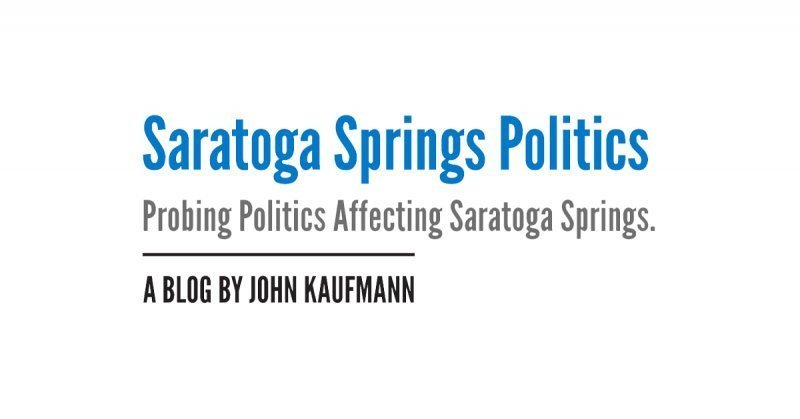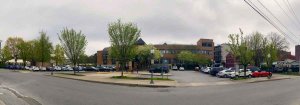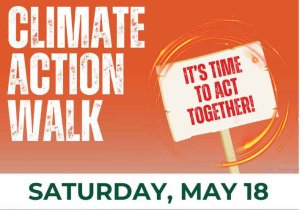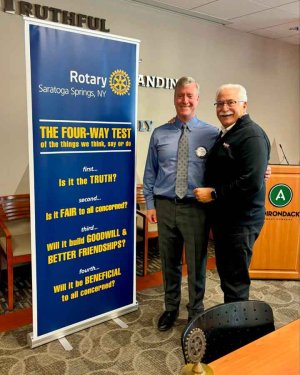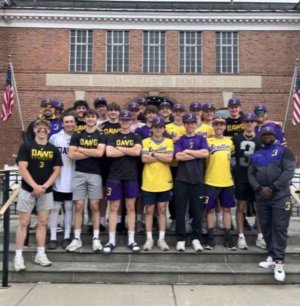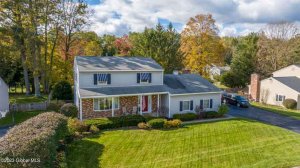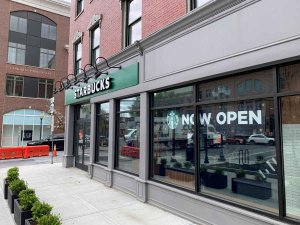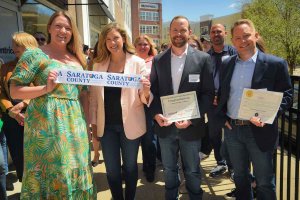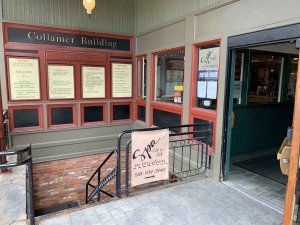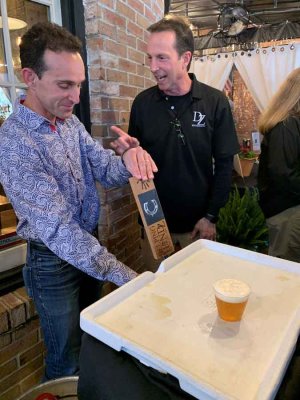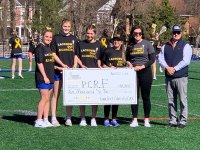[Ed Lindner has lived in Saratoga Springs for more than 40 years. He's a semi-retired appellate attorney, working most recently as a Deputy for the NYS Commission on Judicial Conduct. In 2010, he reluctantly began riding a bike for health reasons and found a passion.]
I was happy to see Jim open his piece with the Red Smith quote about how turning on to Union Avenue brings you back 100 years. It’s a really powerful argument for building a Union Avenue bike lane.
One hundred years before Red’s time there were far more bikes than automobiles in Saratoga Springs. And those bikes were ridden not just on city streets, but on a network of city-built, dedicated bike lanes.
If you were in Saratoga Springs in 1905, the year Red Smith was born, you could have ridden your bicycle to the track to see Dandelion win the Travers on the Union Avenue bike path. As a 1900 Visitor's Guide explains, the “citizens of Saratoga … have prepared several cycle paths especially set apart for the use of bicyclers.” One of those dedicated cycle paths ran along the south side of Union Avenue, from downtown all the way to the lake. That’s real Saratoga history that we can honor with an “Enhanced Union Avenue” today.
And it’s really the “enhancement” of Union Avenue that should be the focus here. Union Avenue is 70’ wide and if all we wanted was a functional bike lane, we could stripe a bike lane there now without losing travel lanes or parking. But the “Enhanced Union Avenue” plan proposes to do much more. A reimagined Union Avenue could:
- Make Union Avenue safer for everyone by reducing speeding.
- Make Union Avenue safer for drivers by reducing crashes and making it easier to turn on to Union from side streets and driveways.
- Make Union Avenue safer for pedestrians by building bump outs and median tips to create shorter crossings.
- Make Union Avenue safer for less confident cyclists – families with kids, seniors on e-bikes and other riders who are uncomfortable riding in traffic – by building protected bike lanes.
- Make Union Avenue a beautiful gateway by using historically appropriate materials and adding greenspace to permit restoration of the iconic Union Avenue tree line.
- Make Saratoga Springs more equitable, by providing a safe, functional transportation option for trackworkers and seasonal workers.
- Make Saratoga Springs more sustainable by promoting nonmotorized, fossil fuel free transportation and using semi-permeable materials to help control stormwater flooding, and …
- Make all of these improvements while maintaining street parking and keeping traffic flow constant (or even better!).
If you’re wondering how that’s all possible, consider the two preliminary sketches below. Please keep in mind that these are not final and not official. Appropriate colors, materials, plantings and trees will all be discussed at a later stage. But even with those caveats, the drawings do give a real sense of what an “enhanced” Union Avenue might look like.
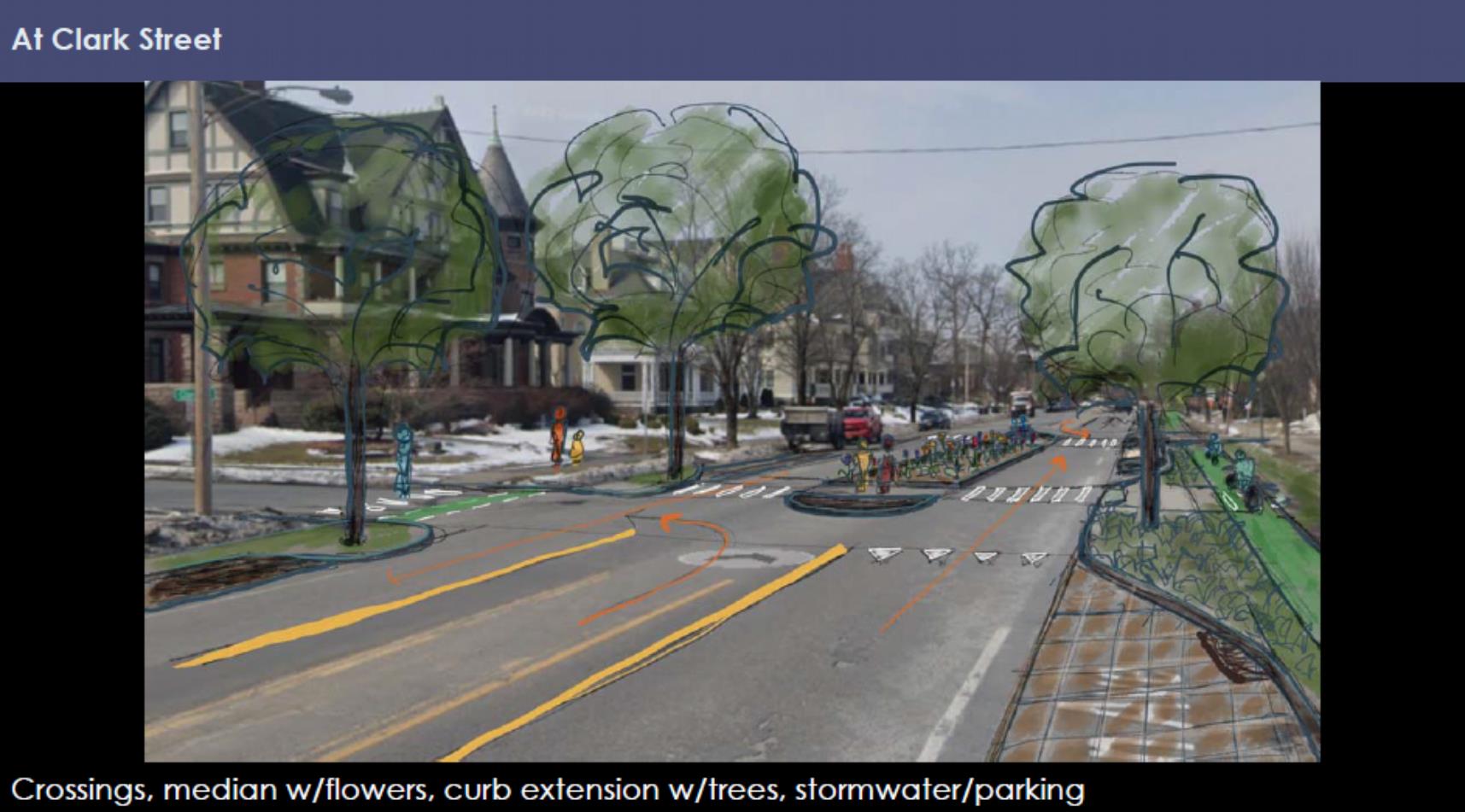
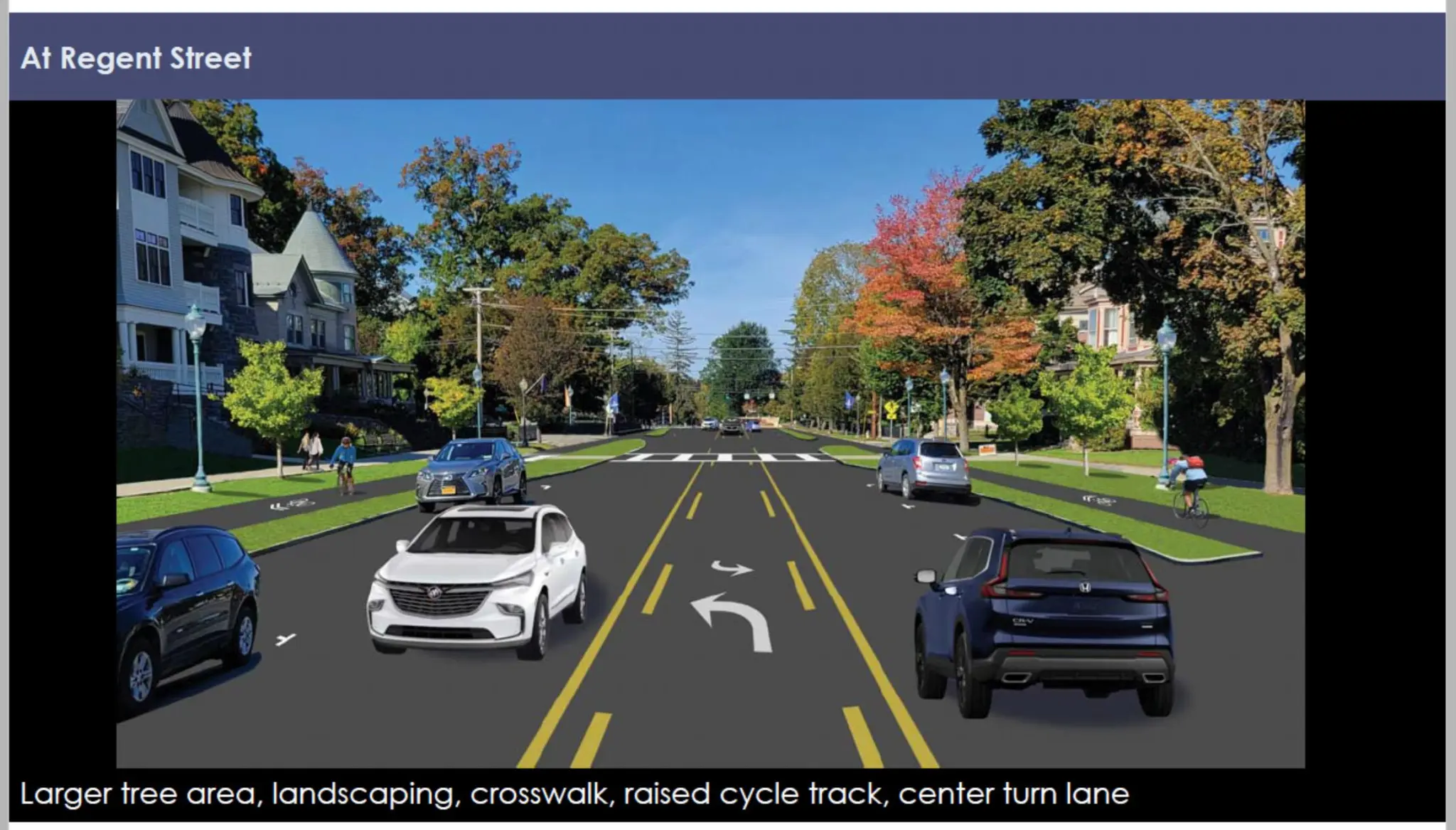
Looking at the top sketch, you see immediately that the Clark Street pedestrian crossing is much, much safer. Instead of trying to race across four lanes of fast-moving cars, people can cross one lane at a time, with a safe median space in the middle. And narrowing the travel lanes with the curb extension and median will compel drivers to slow down.
Parking is already restricted at corners, so building these “bump outs” or curb extensions would have a minimal impact on parking. As you can see, most street parking remains. And the brown, brick material shown in the parking area is meant to represent semi-permeable materials that will absorb stormwater and reduce flooding.
Drivers pulling out on to Union Ave from Clark Street will also benefit from this design. Drivers traveling on Union will be going slower. And for drivers turning left, the reduction in travel lanes means that they need only cross one lane of traffic, with space near the median to pause before continuing.
As you can see in the sketch, reducing the car travel lanes creates a significant amount of new greenspace and a wonderful opportunity to restore Union Avenue’s iconic tree line. And, oh, yes, there’s also a protected bike lane (it won’t be green). The bike lane is an important part of the plan, but as you can see, there is so much more.
But what about traffic flow? It’s a legitimate concern. Anyone who’s ever left the track after the feature race and tried to drive downtown knows how slowly traffic moves. Drivers in both lanes are routinely stopped for people crossing the street. Drivers in the left lane are routinely stopped by cars turning left on Nelson and other side streets. And as two lanes of vehicles approach the park, one lane turning right and one lane turning left, they are slowed by cars backing up on Circular Street.
Take a look at the second sketch, looking east from Regent Street. You can see clearly there what’s known as a “road diet” – reducing four lanes of travel to three, with one lane in each direction and a center turning lane. If we drove downtown from the track using this roadway design the situation at Circular would be the same as it is now – one lane of cars turning right and a center lane turning left. Further back on Union, cars turning left at Nelson or other side streets would move into the turning lane, while traffic in the right lane continued unimpeded.
Is it really possible that three lanes of traffic could move as smoothly as four? Hundreds of similar projects around the country have demonstrated that it’s true. One year after a highly controversial road diet was built in Alexandria, Virginia, a follow-up study found that car crashes were reduced by 41%, peak travel times got better, and traffic was not diverted to neighboring streets. Extreme speeding was down a bit and cycling was up 75%.
That’s just one study, of course. But check out these fact sheets from AARP and the Federal Highway Safety Administration. AARP reports that “thousands of road diets [have been] completed nationwide” and “there are few reports of any being reversed. On the contrary, road diets are proving to be effective, safe and popular.” In Lewistown, Pa., the “road diet” was opposed by “95 percent of residents when it was first proposed; after completion, nearly 95 percent of residents are supportive of the changes.”
So, yes, let’s see what the traffic report being prepared by the City’s consultants tell us. But there’s good reason to think that we can have all the benefits of a road diet – slowing down cars, pedestrian safety, beauty & trees – and still maintain good traffic flow.
A few more of Jim’s points merit a response. His suggestion that cyclist’s “are not tethered to bike lanes” is badly out of touch with progressive urban planning. Consider the Designing for All Ages & Abilities guide, published by the National Ass’n of City Transportation Officials. As NACTO points out, that strategy favors “very confident riders, who tend to be adult men.” We can do better. We should be building a safe and connected bike lane network that everyone feels comfortable riding. We’re not building bike lanes for middle-aged men in Lycra. We’re building bike lanes for families with kids, seniors with e-bikes and anyone else who’s uncomfortable riding a bike in traffic.
There is one point, though, that I think Jim and I agree on. Our current “incomplete streets” patchwork of partial bike lanes serves no one well. Connected bike lane networks matter. But you don’t build a network all at once – you build it one project a time. And Union Avenue is an important part of our City’s Complete Streets Plan.
And it's hardly a bike lane “from nowhere to nowhere.” The City bike lane from Circular to East will connect with the NYSDOT bike lane from East Avenue to Henning Road that’s being built this year. East of Henning, cyclists can and do ride on the very wide shoulder to the city neighborhoods east of the Northway.
And when the network is complete, the Union Avenue bike lane won’t dead end at Circular Street. The Complete Streets plan envisions a bike lane on Circular, crossing Broadway and heading west on West Circular to connect to Railroad Run.
But I think there’s a better plan. The roadway in the park in front of the Casino is not a “park road,” it’s East Congress Street, an official city street. Cyclists have the legal right to ride there now. So I hope the City will permit cyclists to cross the short stretch of pavement between Circular Street and East Congress, connecting the Union Avenue bike lane to East Congress Street to Broadway.
Because that’s where it gets exciting. City plans call for building a bike lane connecting Railroad Run with Broadway via Congress Street. Railroad Run connects to the Spa Park. Saratoga County is extending the Zim Smith trail from Ballston Spa to the southern end of the Spa Park. And the Zim Smith trail runs all the way to Mechanicville, where it connects with the Empire State Trail, a 750-mile bike trail from New York City to Buffalo and the Adirondacks. When these local projects are complete, a cyclist could ride from mid-town Manhattan to downtown Saratoga Springs and out to Saratoga Lake.
And as it turns out, we have history for that too. In the summer of 1879, Wentworth Rollins rode his high wheel penny farthing from 59th Street and 8th Avenue to Saratoga Springs. We know from various accounts that he stayed at the Grand Union Hotel and saw "all that was to be seen from the back of a bicycle around Saratoga." According to the NY Times, his ride was the longest ever made in the United States at the time. Which is to say that Wentworth Rollins, described elsewhere as the "king of American bicyclists," was among the very first American bike tourists. And he chose to ride to Saratoga Springs.
In July of 1899, the Troy Daily Times wrote that, “As in many things, Saratoga excels in bicycle paths.” We have a chance to reclaim that history, on Union Avenue. We can build an “Enhanced Union Avenue” that slows down cars, promotes safe walking and cycling, and makes Saratoga Springs a more equitable and more sustainable community. We should make the investment to create a truly bike and pedestrian friendly city.




